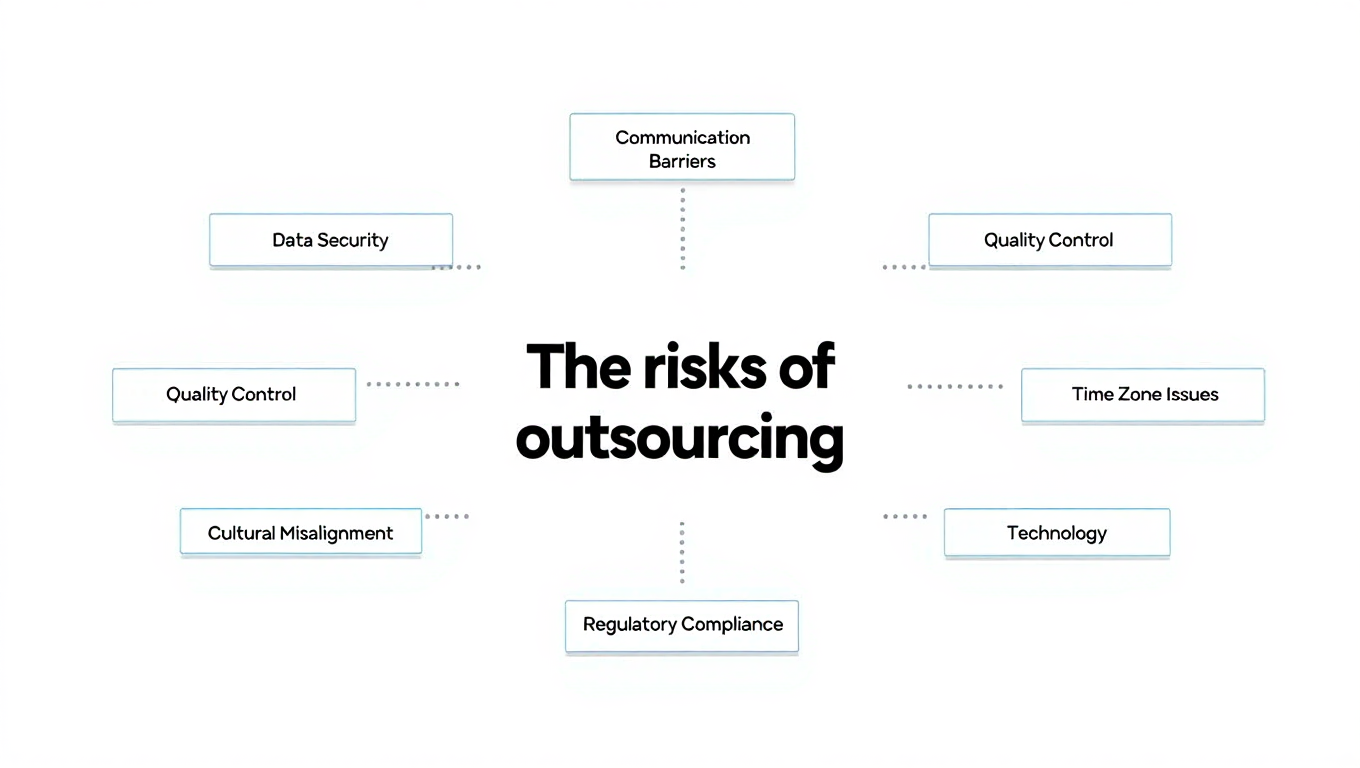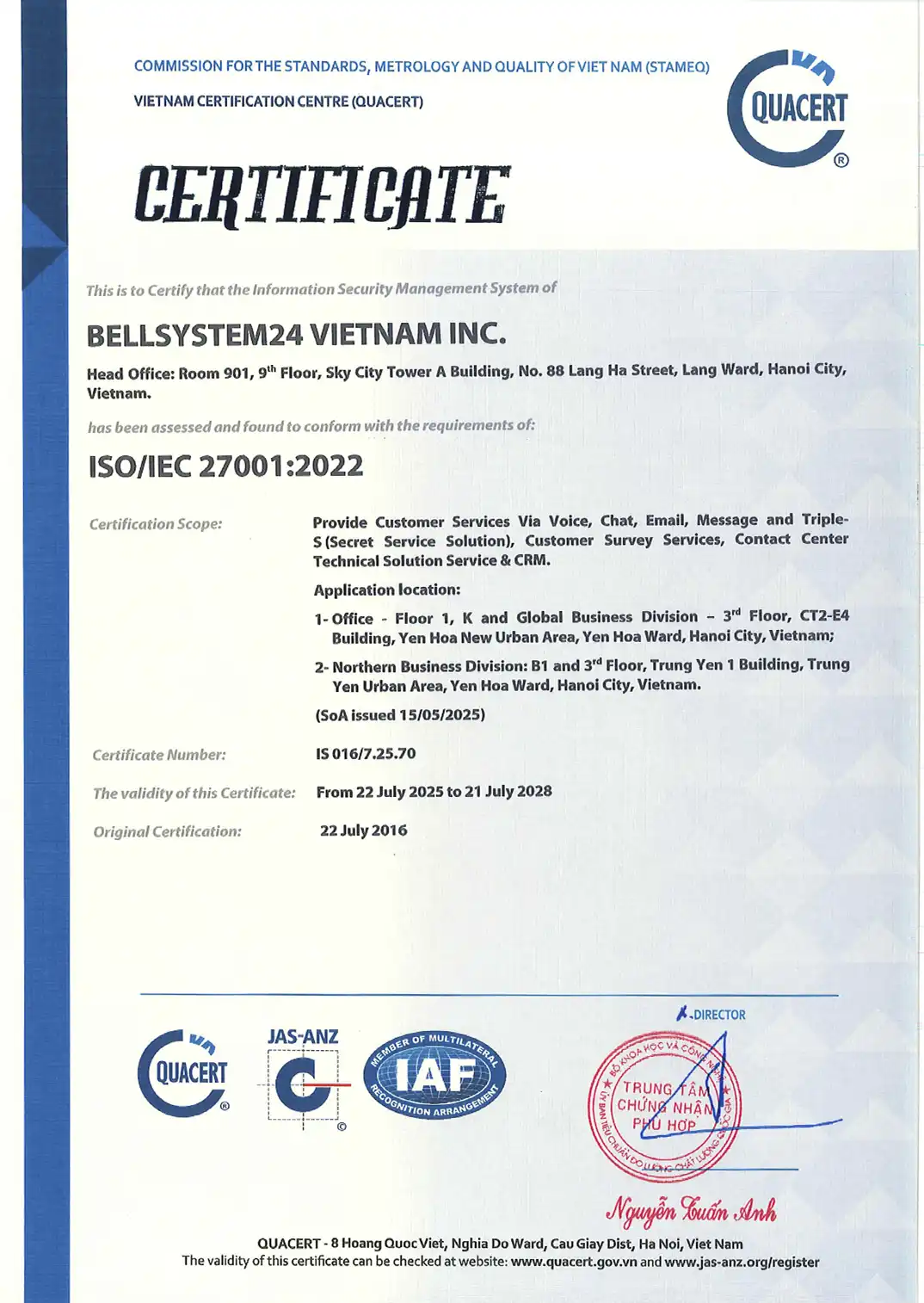In today’s competitive business landscape, offshore Business Process Outsourcing (BPO) has become a strategic imperative for companies seeking to optimize costs, access specialized talent, and focus on core competencies. However, while the benefits are substantial, offshore BPO partnerships come with unique challenges that require careful navigation. This comprehensive guide explores the key risks associated with offshore BPO partnerships and provides actionable solutions to ensure successful collaboration.

Understanding Offshore BPO: The Global Opportunity
Offshore BPO involves partnering with service providers in different countries to handle specific business processes. From customer service and data entry to complex financial analysis and software development, offshore partnerships enable businesses to leverage global talent pools while achieving significant cost savings—often 40-60% compared to domestic alternatives.
You might also like: How Outsourcing to Vietnam Helps Reduce Operational Costs
Major Risks in Offshore BPO Partnerships
1. Communication and Cultural Barriers
The Challenge: Language differences, varying communication styles, and cultural misunderstandings can create significant obstacles in offshore partnerships. These barriers often lead to misaligned expectations, delayed project timelines, and reduced service quality.
Impact on Business:
- Miscommunication can result in delays to the 25-30% project.
- Cultural misunderstandings may affect customer satisfaction scores
- Language barriers can compromise data accuracy and reporting quality
2. Data Security and Compliance Vulnerabilities
The Challenge: Sharing sensitive business data across borders introduces cybersecurity risks and compliance complexities. Different countries have varying data protection regulations, creating potential legal and security vulnerabilities.
Critical Concerns:
- Risk of data breaches affecting customer information
- Non-compliance with regulations such as GDPR, HIPAA, or SOX
- Theft of intellectual property or unauthorized access to data
- Inadequate cybersecurity infrastructure at vendor locations
3. Quality Control and Service Standards
The Challenge: Maintaining consistent quality standards across different geographical locations and cultural contexts presents ongoing challenges. Without proper oversight, service quality can deteriorate, affecting customer experience and brand reputation.
Quality Risks Include:
- Inconsistent service delivery standards
- Reduced attention to detail in critical processes
- Difficulty in implementing company-specific quality metrics
- Limited visibility into day-to-day operations
4. Time Zone and Operational Coordination Issues
The Challenge: Working across multiple time zones creates coordination challenges, potentially leading to delayed responses, extended resolution times, and reduced operational efficiency.
Operational Impact:
- Delayed decision-making processes
- Longer customer response times
- Reduced opportunities for real-time collaboration
- Increased project management complexity
Risk Assessment Matrix
| Risk Category | Probability | Impact Level | Mitigation Priority | Typical Resolution Time |
|---|---|---|---|---|
| Communication Barriers | High | Medium | High | 2–4 weeks |
| Data Security | Medium | High | Critical | 1-2 weeks |
| Quality Control | High | High | Critical | 4 to 6 weeks |
| Time Zone Issues | Medium | Low | Medium | 1-2 weeks |
| Cultural Misalignment | High | Medium | High | 3 to 6 weeks |
| Technology Integration | Medium | Medium | Medium | 2–4 weeks |
| Regulatory Compliance | Low | High | Critical | 2 to 8 weeks |
Proven Solutions for Offshore BPO Success
1. Establishing Robust Communication Frameworks
Solution Strategy: Implement structured communication protocols that bridge cultural and linguistic gaps while ensuring consistent information flow.
Best Practices:
- Conduct comprehensive cultural orientation programs for both teams
- Establish clear communication guidelines and preferred channels
- Conduct regular video conferences to build personal relationships
- Use collaborative project management tools for transparency
- Assign dedicated relationship managers for seamless coordination
Measurable Outcomes: Companies implementing structured communication frameworks report a 35% improvement in project delivery times and a 28% increase in client satisfaction scores.
2. Implementing Comprehensive Security and Compliance Measures
Solution Strategy: Develop multi-layered security protocols that exceed industry standards and ensure compliance with relevant regulations.
Security Framework:
- Conduct thorough vendor security audits and certifications
- Implement end-to-end data encryption for all communications
- Establish secure VPN connections and access controls
- Regular security training and awareness programs
- Continuous monitoring and incident response procedures
- Ensure compliance with international data protection standards
Compliance Checklist:
- GDPR compliance for European data
- HIPAA compliance for healthcare information
- SOX compliance for financial data
- ISO 27001 certification requirements
- Regular third-party security assessments
3. Quality Assurance and Performance Management
Solution Strategy: Develop comprehensive quality management systems that ensure consistent service delivery and continuous improvement.
Quality Management Components:
- Define clear Service Level Agreements (SLAs) with specific metrics
- Conduct regular quality audits and performance reviews
- Establish customer feedback loops and satisfaction monitoring
- Develop standardized training programs for offshore teams
- Develop escalation procedures for quality issues
Service Level Agreement (SLA) Benchmarks
| Service Category | Response Time | Resolution Time | Quality Score | Availability |
|---|---|---|---|---|
| Customer Support | ≤ 2 hours | ≤ 24 hours | ≥ 95% | 99.5% |
| Data Processing | ≤ 4 hours | ≤ 48 hours | ≥ 98% | 99.9% |
| Technical Support | ≤ 1 hour | ≤ 8 hours | ≥ 97% | 99.7% |
| Financial Services | ≤ 2 hours | ≤ 12 hours | ≥ 99% | 99.9% |
| IT Services | ≤ 30 minutes | ≤ 4 hours | ≥ 98% | 99.8% |
4. Strategic Time Zone Management
Solution Strategy: Turn time zone differences from obstacles into operational advantages through strategic planning and resource allocation.
Time Zone Optimization Techniques:
- Implement a follow-the-sun model for 24/7 coverage
- Schedule overlapping working hours for critical communications
- Use asynchronous communication tools effectively
- Plan project timelines considering time zone advantages
- Establish clear shift handover procedures
You might also like: Choosing the Right Offshore BPO Partner
Conclusion
Offshore BPO partnerships offer tremendous opportunities for businesses seeking cost optimization, access to global talent, and operational efficiency. While risks exist, they can be effectively managed through careful partner selection, robust governance frameworks, and continuous relationship management.
Success in offshore BPO requires a strategic approach that goes beyond cost considerations. Companies that invest in proper risk mitigation strategies, maintain strong communication channels, and build genuine partnerships with their offshore providers consistently achieve superior results.
By implementing the solutions and best practices outlined in this guide, businesses can harness the full potential of offshore BPO while minimizing risks and maximizing long-term value. The key lies in viewing offshore partnerships not as vendor relationships but as strategic alliances that drive mutual growth and success.







